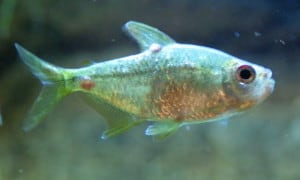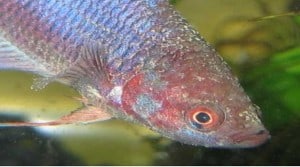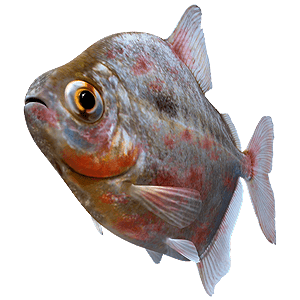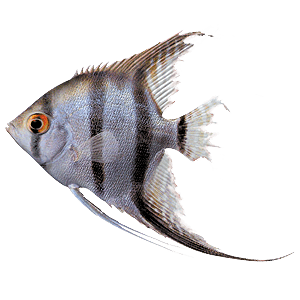In an emergency you may need to find out what is wrong with your tropical fish, we have listed the most common diseases and health problems tropical fish may have below with the symptoms too.
Please click on the disease for further information including prevention, cure and treatment.
Anchor Worms
- Scratching against objects by the affected fish
- A protuberance of whitish-green threads from the fish’s skin
- Points of attachment are marked by inflammation
 Body Flukes
Body Flukes
- Scratching against objects by the affected fish
- Layer of mucus covering gills or body
- Gills moving rapidly
- Chewed on or eaten-away gills or fins
- Reddened skin
- Note: Pale fish with drooping fins, rapid respiration and/or hollow bellies indicate more extensive infestation
 Clamped Fin
Clamped Fin
- Fins are folded against the body and not fanned out as they should be
- Listless behaviour
 Cloudy Eye
Cloudy Eye
- The fish eye becomes cloudy almost to the point of whiteness and the fish lose vision
 Dropsy
Dropsy
- Bloating
- Protruding scales
 Fin Rot
Fin Rot
- A progressive deterioration of the tail and/or fins
- Fins become frayed or their color may fade
 Fungus
Fungus
- Initially, you’ll notice a gray or whitish growth in and on the skin and/or fins
- Untreated fungus resembles a cottony growth
- Eventually, as fungus continues to eat away at the fish’s body, the fish will die
 Gill Flukes
Gill Flukes
- Infected gills and skin
- Similar to ich, but telltale sign is movement and possibly eye spots, something that is not found in ich – use magnification lens to observe
- Once gills are destroyed, fish will die
 Gill Mites
Gill Mites
- Gasping at the water’s surface
- Gill covers that are partially open
 Hemorrhagic Septicemia
Hemorrhagic Septicemia
- A variety of different symptoms may occur, though some fish exhibit no external symptoms
- Hemorrhaging of internal organs, skin and muscle
- Bulging eyes
- Bloated abdomens
- Bruised-looking reddish tints to eyes, skin, gills and fins
- Open sores
- Abnormal behavior
 Hole In The Head
Hole In The Head
- Small hole or holes form in the head of the fish
- Fish are white in colour and often have yellowish mucous trailing form them
- Stop feeding
 Ich (White Spot) (Ick)
Ich (White Spot) (Ick)
- Small white spots resembling sand or sugar granules
- Fish scratch against rocks and gravel
- In advanced stages fish become lethargic
- Redness or bloody streaks
- Clamped fins
- Fish gasping at the water’s surface
 Lice
Lice
- Red spots on fish indicating an inflammation
- Fish are aggravated and restless
- Usually fish will rub skin against aquarium glass or other objects in an effort to remove lice
- Other telltale signs: Lice have eight legs—and resemble tiny pale crabs. They appear as flat, dark oval dots crawling on fish
 Pop Eye
Pop Eye
- Fish eye becomes large and appears to look as if it is going to pop out of the socket
 Ragged Tail Fin
Ragged Tail Fin
- A progressive deterioration of the tail and/or fins
- Fins become frayed or their color may fade
 Swim Bladder Disease
Swim Bladder Disease
- Fish stays right at the top of the aquarium
- Not able to get off the substrate and stays at the bottom of the aquarium
- Fish swimming upside down
- Not feeding
- Fish is unable to stay still
- Swimming around in circles


 Cloudy Eye
Cloudy Eye











